Spring 2020
Jonathan Ochshorn
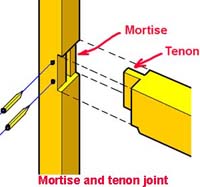
Balloon framing was invented in the U.S. in the mid-nineteenth century and consisted of wood elements with small cross-sections (what we now call "dimension lumber") configured in the wall as plates (horizontal) and studs (vertical); and in the floors and roofs and joists and rafters respectively. The strength and stiffness of such systems relies on diaphragm action in the walls and floors, created by nailing sheathing (walls) and subfloors (floors) to the studs and joists. In traditional balloon framing, diagonal wood members were "let into" the walls to provide lateral stability; in modern construction, plywood (or OSB) sheathing creates so-called "shear walls" without any diagonal elements required.
Platform framing: A subsequent modification of balloon framing was so-called "platform framing," which is the prevalent mode of light wood framing today. The main difference between the two systems is that in balloon framing, the vertical studs are continuous from foundation to roof, whereas in platform framing, the studs are interrupted at each floor level by the floor construction. Platform framing has these advantages over balloon framing:
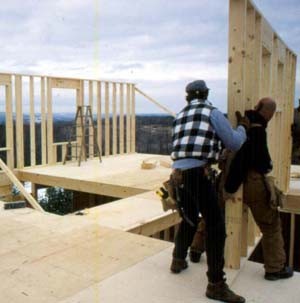 House designed by, and photo by, J. Ochshorn (details)
House designed by, and photo by, J. Ochshorn (details)Disadvantages of platform framing, compared to balloon framing include:
Typical platform framing can be summarized by the following sketches. For additional details, see text and materials on permanent and course reserve (especially Architectural Graphic Standards and Thallon's Graphic Guide to Frame Construction).
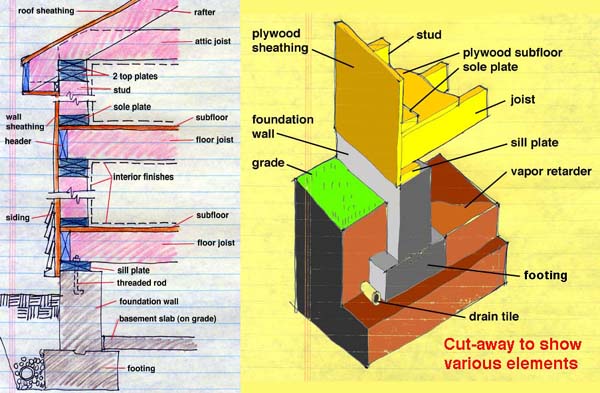
Additional nonstructural elements: Other nonstructural elements in wood frame construction, not shown in the sketches above, include:
Note that plywood (or OSB) panels are ordinarily oriented perpendicular to the direction of the structure (joists or studs), as shown in the following construction photo:
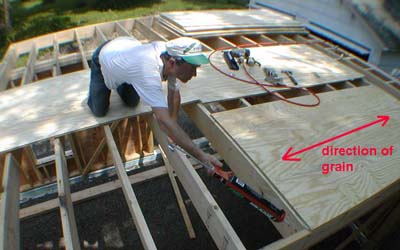
House designed by, built by J. Ochshorn; photo by Rob Ochshorn (details)
Cantilevers must be consistent with the direction of framing; where a cantilever is desired that contradicts the framing direction, the framing must be altered so that the cantilevered joists extend back into the main structure:

Photo at right shows cantilever in house designed, built, and photographed by J. Ochshorn (details)
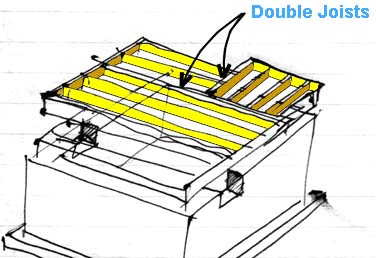
Sketch showing cantilevers in two directions
Openings: Typical openings (holes) in floors are made by doubling the joists around the opening; any unusually large opening should be analyzed structurally to design the appropriate framing:
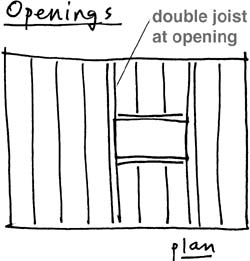
Openings in walls must be framed with a structural beam (lintel) over the opening, its size varying depending upon the span of the opening. As with typical floor openings, studs are doubled at the sides of the opening, with the lintel bearing on the inner stud. The ordinary module of the studs (16" or 24" o.c. typically) continues above and below the opening.
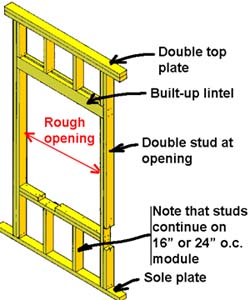
The contemporary drive to save energy has rekindled interest in a more cost-effective and energy-efficient framing system developed in the 1970s. This "optimum value engineering" (OVE) framing is now called "advanced framing" and eliminates many of the gratuitous wood elements within tradition platform framing: double plates are replaced with single plates; double studs around doors and windows are replaced with single studs; all studs, rafters, and joists are aligned vertically so that load paths are clear and consistent (and so additional framing lumber is not required), and so on. On the other hand, traditional 2 x 4 framing for the exterior walls at 16 in. o.c. is replaced with 2 x 6 studs at 24 in. o.c. (the joists and rafters are also aligned at 24 in. o.c.). In spite of the larger wood cross sections (used to increase the space available for wall insulation), there is still a net gain in wood efficiency: i.e., less wood is used in advanced framing. An excellent overview of the system is provided by the Building Science Corporation.
Mass timber buildings have begun to appear, especially in Europe. In the U.S., the 2015 IBC permits such construction, but places cross-laminated timber (CLT), for example, in Type III, IV, or V construction, with at most 6-stories allowed. Required noncombustible exterior walls can be CLT if the outer layer is made of fire-retardant wood, or covered with some sort of fire-rated material like gypsum board. An 80-story mass timber office building is proposed for London; the T3 project in the U.S. is under construction (2016); and an 85-foot-tall CLT building received a permit in Portland, Oregon (2017).
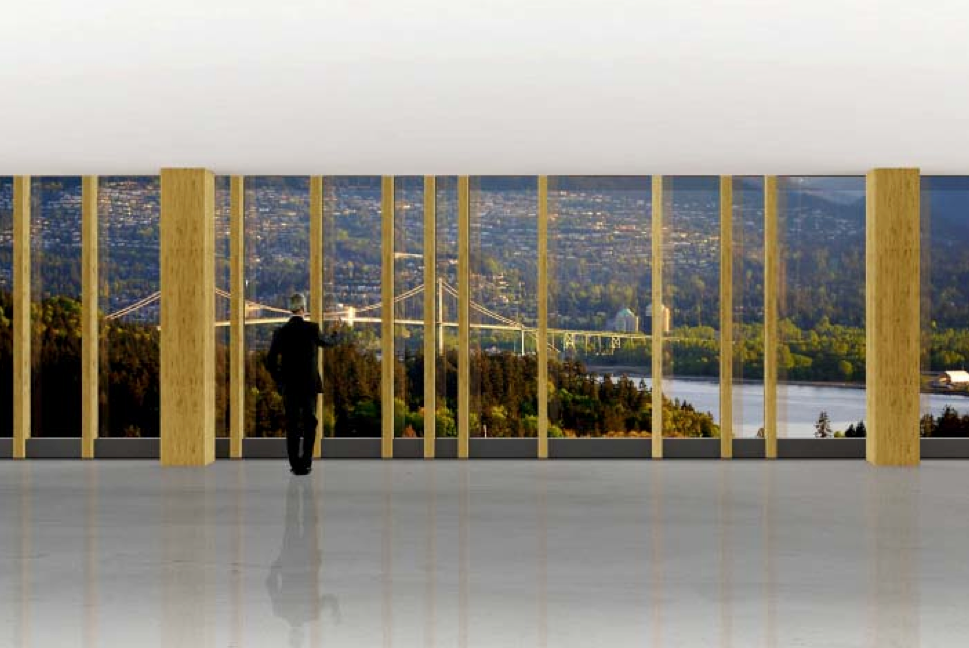

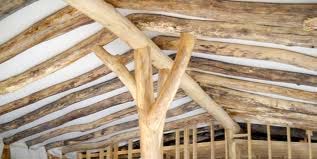
Leone Battista Alberti (left; iamge from Wikipedia) and roof framing with round rafters (right; Whole Tree Architecture)
"In Sparta, under a law issued by Lycurgus, it was forbidden to build a roof except with an axe, or to make a door with anything but a saw. When Agesilaus noticed that at -------- in Asia they squared the beams of their houses, he laughed, and inquired whether they would make something round if it grew square. He was right: their ancestral modesty dictated that a house should be built for convenience, not for charm or delight..."
(The Ninth Book, translation of Leon Battista Alberti's De re aedificatoria by Joseph Rykwert et. al. 1988, p.291)
Disclaimer: Students are responsible for material presented in class, and required material described on course outline. These notes are provided as a tentative outline of material intended to be presented in lectures only; they may not cover all material, and they may contain information not actually presented. Notes may be updated each year, and may or may not not apply to non-current versions of course.
first posted Aug. 24, 2007 | last updated: June 15, 2017
Copyright
2007-2017 J. Ochshorn. All rights reserved. Republishing material on this web site, whether in print or on another web site, in whole or in part, is not permitted without advance permission of the author.